What is Polish Chicken? Despite its name, it isn’t a feathered, walking version of your favourite pierogi. Instead, it’s a delightful and quirky breed of poultry that’s captured the hearts of chicken enthusiasts worldwide.
With their striking appearance and charming personalities, Polish chickens are more than just a farmyard novelty – they’re the feathered friends you never knew you needed in your backyard. So, whether you’re a seasoned chicken keeper or a newcomer to the world of poultry, join us on a cluck-tasty journey to discover the fascinating world of Polish chickens!
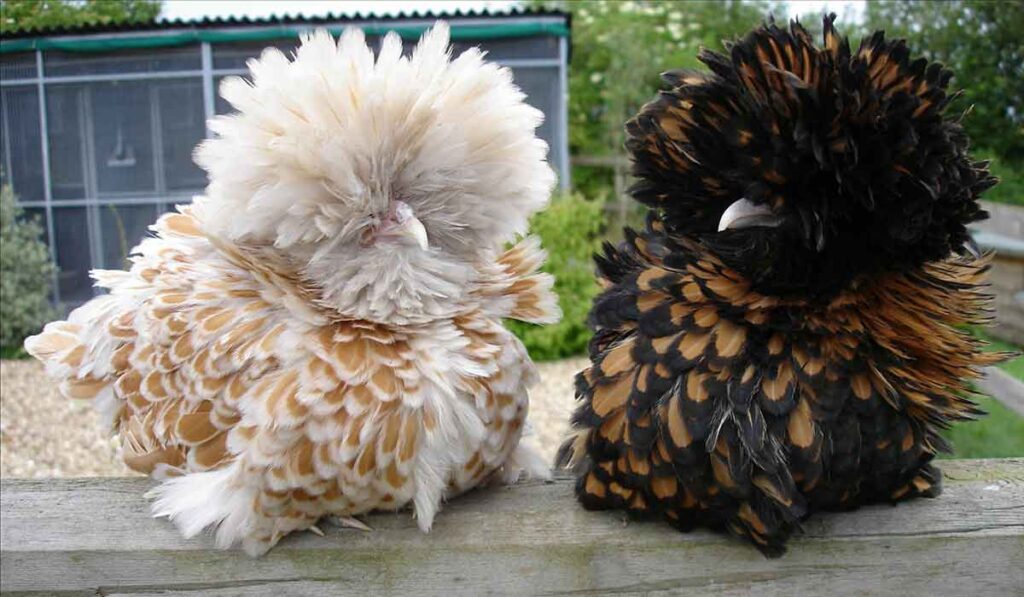
SEE ALSO:
- Spicy Chicken Sandwich Recipe
- Peri-Peri Chicken Recipe
- How to Prepare Chicken Chow Mein With The Best Sauce
What does a Polish Chicken look like?
The Polish chicken is an extraordinary and captivating breed. It boasts a distinctive large hat-like crest, and some variations even sport beards and muffs. This feathery crest is supported by a bony cone or protuberance on the skull.
In addition to their crest, they possess a small red V-shaped comb, cleverly concealed beneath their feathers. They also display striking red wattles and white earlobes. These chickens are relatively small, covered in soft feathers, and feature white skin with ample nostrils. Notably, their grey shanks or legs lack feathers, and they have four toes on each foot.
When it comes to appearance, Polish hens showcase a neat feather crest resembling a pom-pom, while Polish roosters flaunt a more ruffled mop-like crest. However, the allure of their feathery crest comes with a drawback – the feathers can sometimes obstruct a Polish chicken’s vision, rendering them vulnerable to aerial attacks by predators such as eagles.
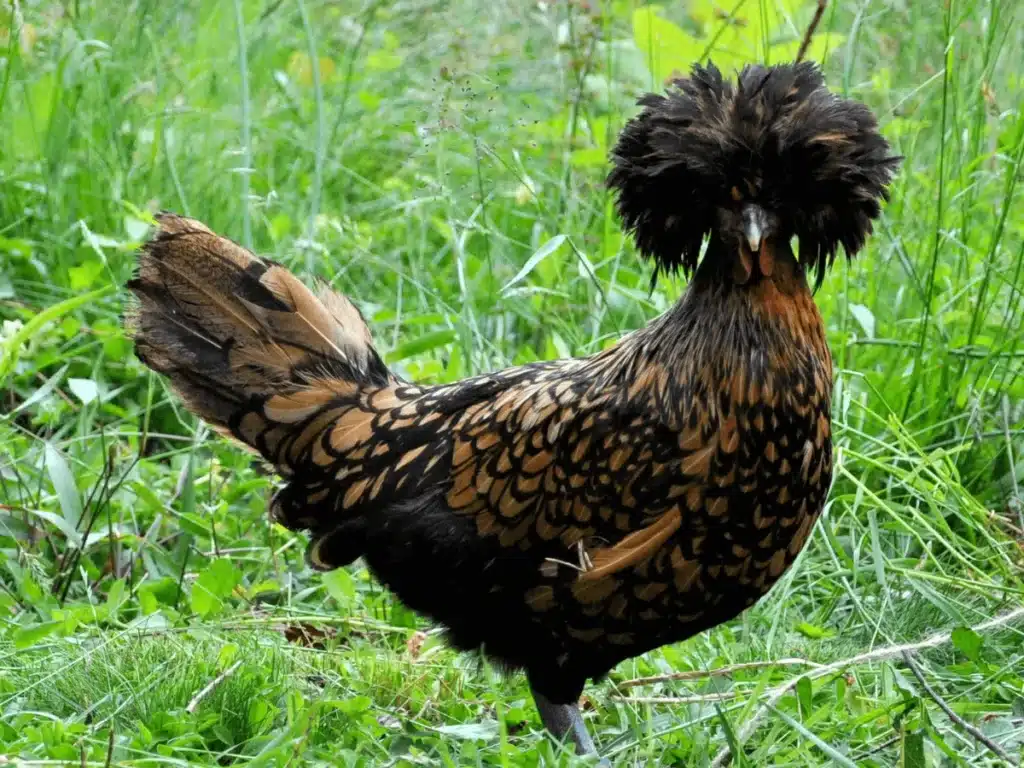
How to Identify a Polish Chicken?
Polish chickens are divided into two:
- Polish rooster
- Polish hens.
Polish rooster vs. Polish hens; how to tell them apart
It’s often easy to tell them apart just by looking at the feathers on their head.
- Polish roosters have top knots of feathers that are very flamboyant. The feathers are sharp-tipped and very tousled. These birds look sort of like rock stars.
- Polish hens have top knots that are very sleek and smooth. Their crests curve closer around their heads and are more like a bob than a mohawk.
Polish chicken has a variety of colours they come in varieties of colour;
Polish chickens come in a variety of colours, including some very pretty laced versions. The laced feather pattern describes feathers that are outlined in a different colour than the colour in the centre of the feather.
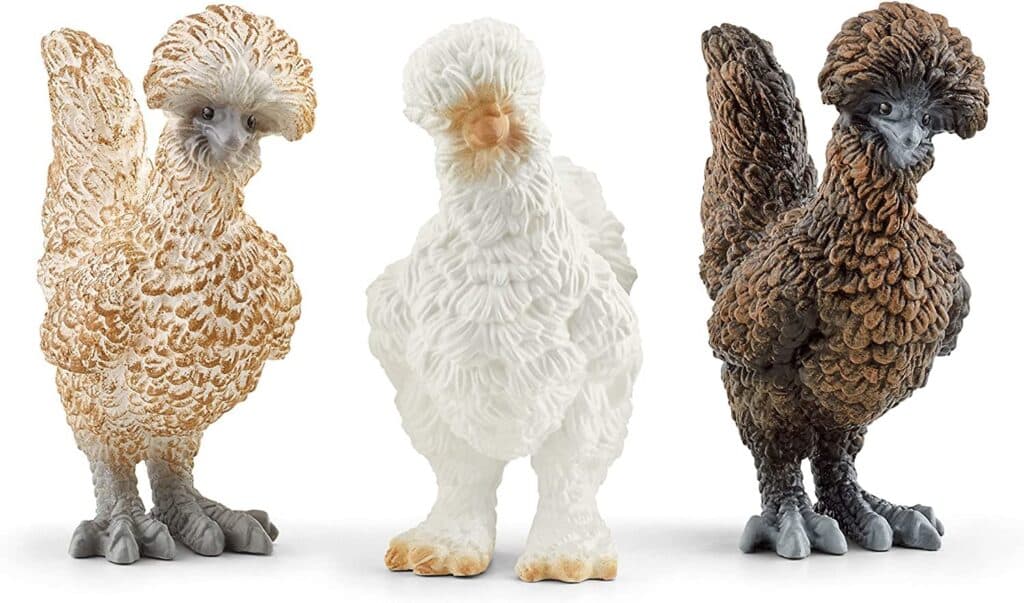
Available Polish Colors
- White Crested Black Polish
- White Crested Blue Polish
- White Polish
- Silver Laced Polish
- Golden Laced Polish
- Buff Laced Polish
- White Laced Red Polish
- Black Crested White Polish
Breeders are currently working on several other feather variations, but they are not yet included in the breed standard.
Related: Can Dogs Have Honey? Important Facts to Know
Ways to care for a Polish Chicken?
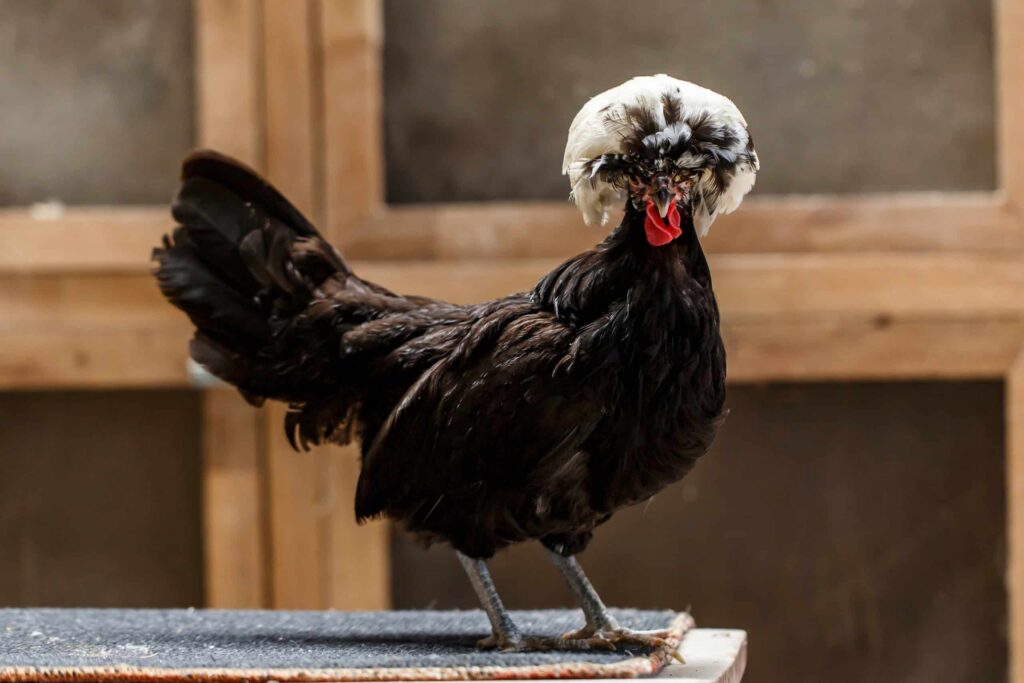
There are several ways to care for Polish chickens, as they are prone to getting sick or even experiencing sudden death in cold weather. Therefore, polish chickens are more comfortable in a warm and not-too-wet environment.
However, they need some shady spots to stay comfortable even in the warmth. Polish chickens don’t do well in cold weather because their special head feathers can get wet and freeze, which makes them feel very cold.
So, keeping them in a warm and dry place is important to keep them happy and healthy. You should consider the following to care for your Polish chickens;
- Provide a well-ventilated housing
House the chickens in a well-ventilated and dry chicken coop. Having a well-ventilated coop gives them enough room to move around without bumping into one another or damaging each other’s crest in the process. If you intend to house the chicken to lay eggs, then ensure they are kept indoors at all times.
If otherwise, you can leave them to scavenge for food during the day, but make sure they are kept in their shelter at night to avoid thievery. If you are breeding them for laying eggs, they must always be kept indoors.
To get an understanding of their coop housing, there must be four birds per square meter, which is 2.7 square feet per bird with 8 inches of space per perching.
- Provide them with the necessary nutrients
All living things eat to replenish their energy, so does applies to Polish chicken. Polish chicken tends to eat more in colder months to produce more body and eat less in warmer months. So, be sure to include all necessary nutrients in their food to satisfy their energy requirements.
For Polish chickens intended for egg laying, you can include nutrients like calcium for better eggshell quality. Also, be sure to include hard grit in their meals from time to time, as they tend to eat coarse materials with their food. This will help your chicken haste digestion.
Make sure your birds always have access to food. Use feeders or troughs that are big enough for all your chickens to eat at once. It’s a good idea to swap out old feed for fresh feed every few weeks.
In addition to food, give your chickens clean, fresh water every day. You can use 1 or 2-gallon drinkers or large tank water systems. Set up multiple water containers around their area so all the birds can easily drink. Don’t forget to clean the water containers every day to keep the water fresh and cool for them.
- Grooming
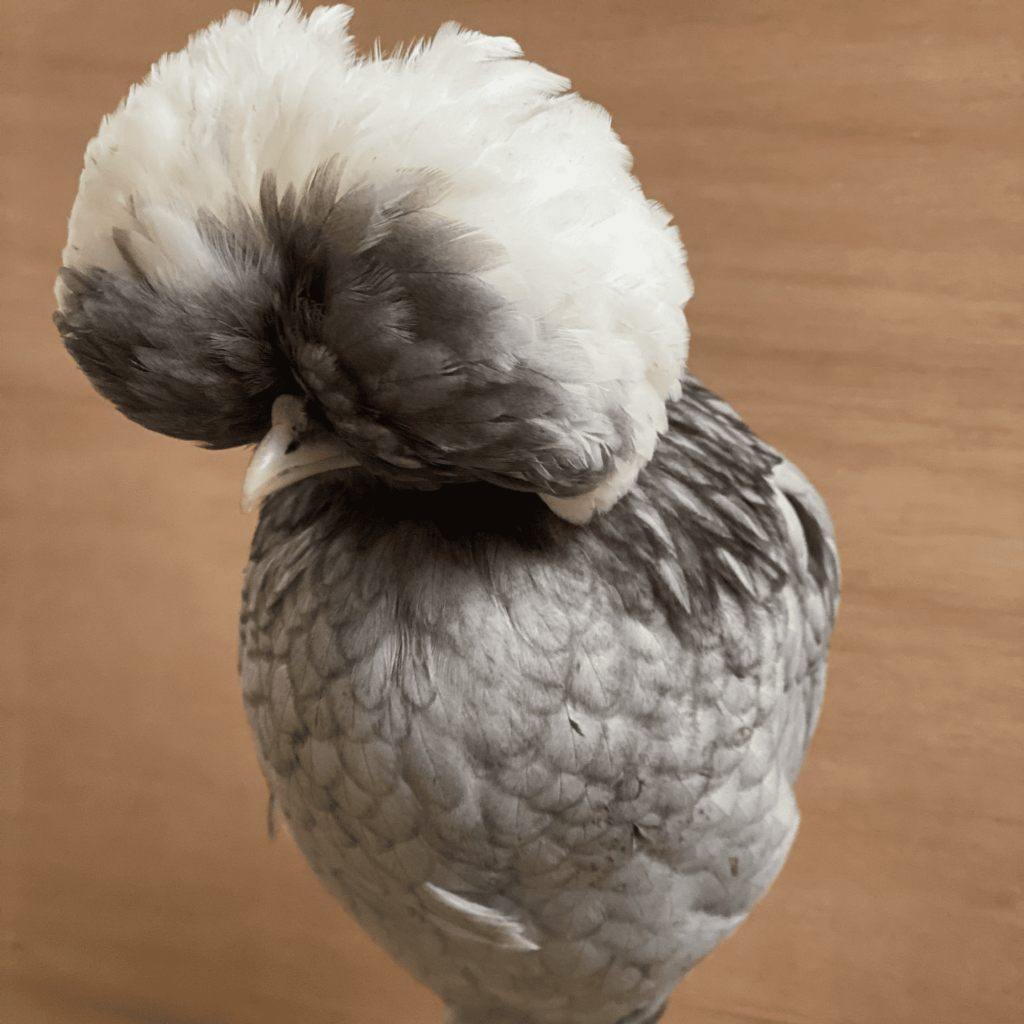
If you have Polish chickens that you plan to showcase, it’s essential to groom and bathe them properly. Bathe your chickens about 3 to 5 days before the show to allow enough time for them to dry. When it comes to grooming, use clippers to trim their nails, and then use an emery board to make them smooth.
For bathing, fill large tubs with warm water. You can use a mixture of shampoo, a quarter cup of vinegar, and conditioner to clean your Polish chickens. Hold your chicken with its breast in your hand and gently lower it into the tub. Most birds find this relaxing and may even fall asleep during the bath. Afterwards, dry them using towels or a blow dryer.
Related: Can Cockroaches Live in Your Penis?
Breeding History
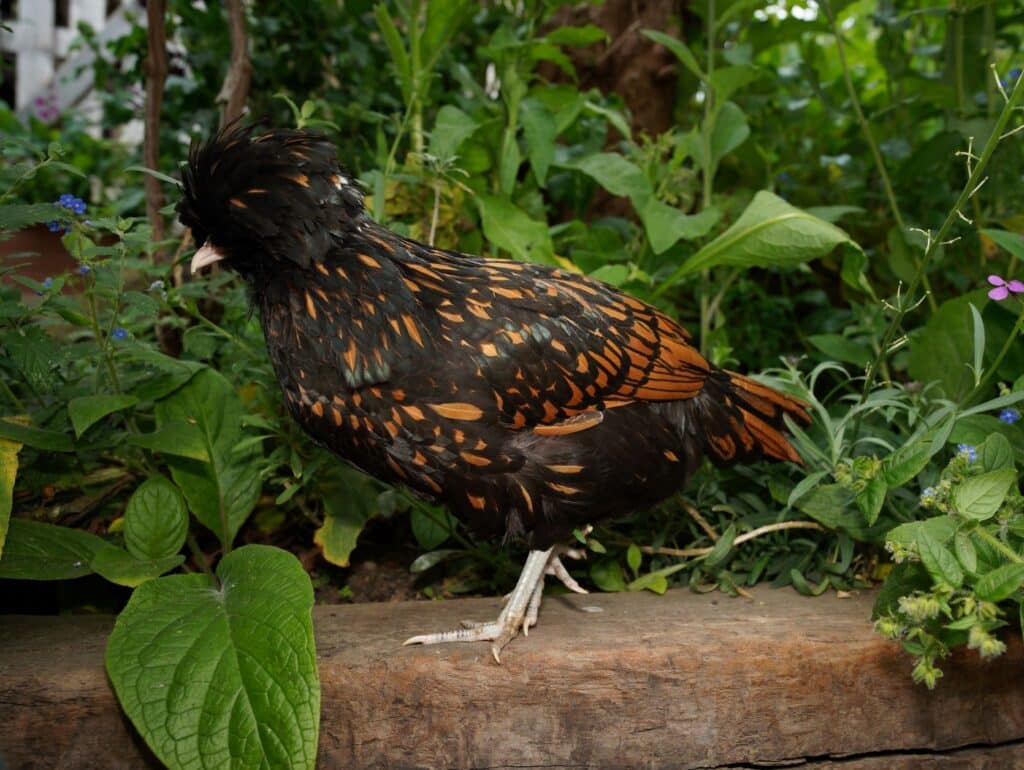
Polish chickens have a fascinating history, with different theories about their origins. Some poultry historians believe they were brought to Holland from Spain in the late 16th century when Spain occupied the lowlands.
Regardless of their origin, Dutch fanciers in the 18th century played a crucial role in refining their colour patterns and developing their distinctive crests. These chickens have gone by various names over time, including “Poland,” “Tophat,” and “Paduan.”
Charles Darwin classified any chicken with a crest as a “Polish” or “Crested” chicken, likely because their head feathers resembled the crests on Polish soldiers’ caps. Another theory suggests the name might be derived from the Dutch word “Pol,” meaning “large head.”
Polish chickens were known in England in the 1700s and gained popularity in France for their egg production. They made their way to America between 1830 and 1840 and became widespread by 1850.
However, their popularity as egg producers waned in the 1850s to 1890s with the rise of Leghorn chickens in England and America. Polish chickens were mainly kept for exhibitions. In terms of varieties, several types of Polish chickens were recognized by the American Poultry Association Standard of Perfection over the years.
They have distinctive characteristics, including their crests supported by a bony prominence on the skull. Hens have tidy “pom-pom” crests, while roosters sport untidy mop-like crests, but both can sometimes have feathers that obstruct their vision, making them susceptible to aerial predators.
Polish chickens may also have beards with feathers on their faces. Males have a red V-shaped comb that may be hidden by their head feathers, white earlobes, red wattles, and large nostrils. They have grey legs without feathering and four toes on each foot.
They typically lay around 150 medium-to-large white eggs annually, starting a bit late in the season but persistently once they begin. These chickens are not prone to going broody and are similar in size and type to Leghorns, with males weighing around 6 lbs and females around 4.5 lbs. They have white skin.
Polish chickens thrive in dry, warm climates and can handle heat if provided with shade. However, they are less suited to cold weather, as their crests can become waterlogged and freeze in icy conditions.
Proper ventilation and a dry coop are essential for their well-being. While they are a friendly breed, their crests can hinder their awareness, so it’s best to approach them calmly and speak to them. They are good flyers due to their lightweight build and may roost in tree branches.
Related: How Long Do Flies Live?
Polish Chicken Behaviour and Temperament
Polish Chicken Behaviour
Polish chickens are calm, gentle, friendly, and active birds. However, they are easily surprised or frightened and may have a nervous disposition. It is because they can’t see properly because of their large crests. Poultry handlers always talk to them when they’re closer so they don’t get scared and fly off.
Related: When Was Walking Invented?
Polish Chicken Temperament
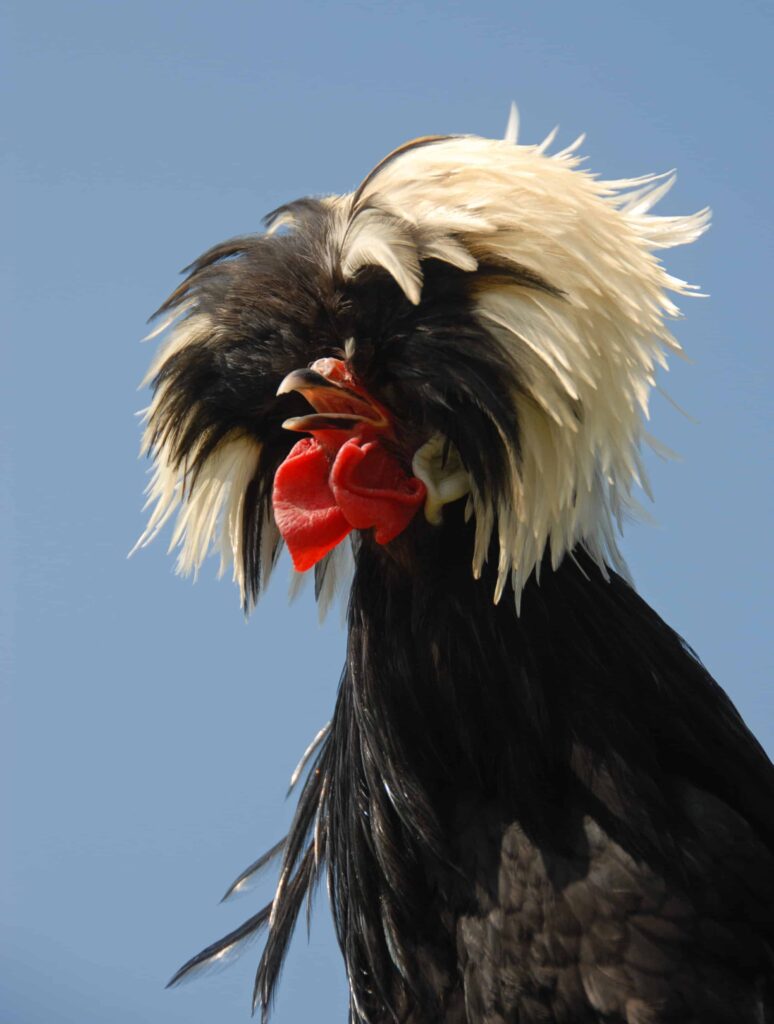
The Polish are generally said to be a calm and gentle bird, suitable for children to have as pets.
Polish chickens can sometimes be a bit nervous and prone to flightiness, often due to issues with their head feathers obstructing their vision. To avoid startling them, it’s helpful to talk or whistle as you approach them, letting them know you’re coming.
Trimming the feathers around their facial area is often necessary to improve their ability to see potential predators and prevent feathers from getting into their eyes, which can lead to infections.
These chickens, especially the hens, don’t typically go broody, although this can vary depending on the specific strain or lineage of the bird.
While many Polish chickens are bred mainly for their striking appearance in exhibitions, some breeders prioritise staying true to the bird’s original characteristics. These chickens tend to be better egg layers and may display more broodiness.
Polish chickens are naturally curious and enjoy investigating their surroundings. However, their inquisitiveness can sometimes lead to them getting stuck in places requiring assistance.
Therefore, keeping them in enclosed spaces is a good idea, which they generally tolerate quite well. If they become separated from the flock and can’t see the other chickens, they often vocalise and respond to the calls of the other hens, which helps them find their way back.
Related: Bismuth Crystals: A Comprehensive Review
Conclusion
Polish chickens are a delightful addition to any flock, offering a touch of elegance with their fabulous plumage and a friendly and endearing presence. From their distinctive appearance to their charming personalities, these birds have carved out a special place in the hearts of poultry enthusiasts around the globe.
Whether you’re drawn to them for their ornamental value or seek a lovable and unique feathered companion, Polish chickens will surely bring joy and fascination to your poultry-keeping endeavours.
So, whether you’re a seasoned chicken keeper or considering your first feathered friend, don’t overlook the captivating world of Polish chickens – they’re cluck-worthy in every sense of the word!
Related: How Long Do Butterflies Live? Find Out Below
FAQs
Is Polish Chicken good meat?
The Polish chicken is classed as a soft feather-lighter breed, and this description does mean exactly what it says: they are no use as a meat bird, and although they do lay a decent white egg, they are not a prolific layer.
Do Polish chickens lay good eggs?
Despite their unique appearance, Polish chickens are quite common to find at hatcheries. They were bred originally for their excellent egg-laying abilities, but if you’re looking for a master egg layer nowadays, you’ll struggle to get more than 200/year from your Polish hens.
Do Polish chickens like to be held?
Many Polish chickens love to be picked up and even carried around. They’ll fly up to perch on your shoulders or head. And they love to fall asleep in your arms. Even many roosters will do this.
